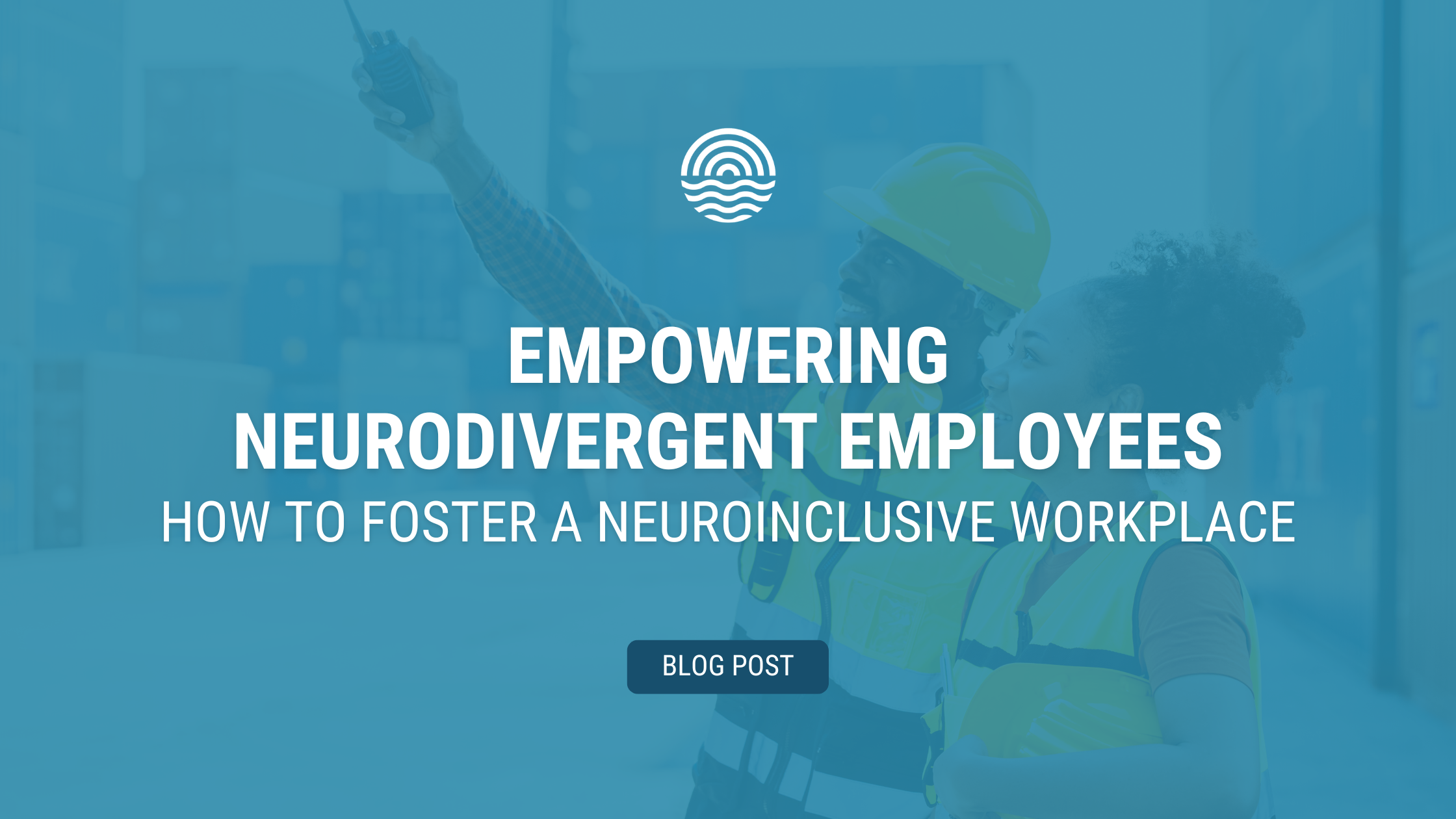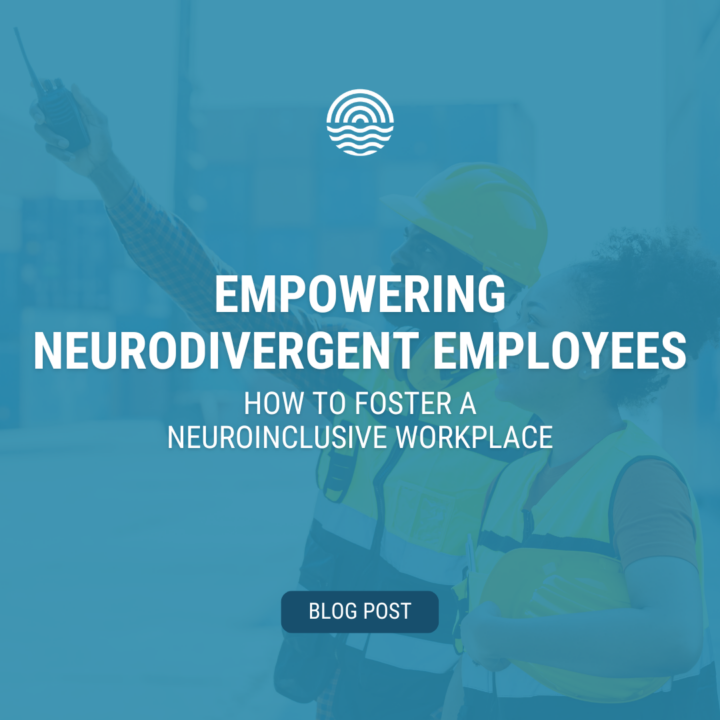
BLOG POST
Empowering Neurodivergent Employees: How to Foster a Neuroinclusive Workplace
Human brains vary significantly. No two are the same. And that’s a beautiful thing!
Just as our fingerprints are unique, so too are our cognitive abilities, learning styles, and ways of processing information. This diversity, known as neurodiversity, is a natural part of the human experience.
In recent years, there’s been a growing recognition of neurodiversity in the workplace. This shift in perspective has led to a greater understanding of the benefits of creating inclusive environments that accommodate and celebrate the unique strengths of neurodivergent individuals.
When a workplace is neuroinclusive, it means everyone feels valued and supported, no matter how their brain works. A neuroinclusive workplace is one that acknowledges and celebrates the differences in how people think, learn, and process information.
This helps companies foster a culture that values new ideas and where people work better together.
So, where do you start?
To create a neuroinclusive workplace, it’s essential to understand the basics of neurodiversity. We’ll dive deeper into these topics in this blog, providing context for better understanding neurodiversity, the challenges neurodiverse people face, and how to foster a neuroinclusive environment.
Understanding Neurodiversity
Neurodiversity means that people’s brains work in different ways.
Some people have conditions like autism, ADHD, dyslexia, dyspraxia, or Tourette syndrome. These conditions can affect how people think, talk, and feel. However, while individuals with the same neurodivergent condition may share certain commonalities, their experiences can vary widely due to a combination of factors, including severity of symptoms, co-occuring conditions, environmental factors, and individual differences.
While neurodivergent individuals may face certain challenges, they also possess unique strengths. For example, people with autism are often really good at noticing details and solving problems. People with ADHD can be very creative and think of innovative new ideas.
Understanding these strengths is essential for creating a workplace that leverages the unique contributions of neurodivergent employees and, most importantly, creating a workplace where everyone feels valued.
Challenges Faced by Neurodivergent Employees
Neurodivergent employees often encounter significant challenges in the workplace that hinder their ability to participate fully and contribute to their maximum potential.
These challenges can be exacerbated by a lack of understanding and awareness of neurodiversity, leading to a hostile work environment and decreased job satisfaction.
Some of the most common challenges faced by neurodivergent employees include:
- Sensory sensitivities: Difficulty with noise, lighting, or other environmental factors.
- Communication difficulties: Struggles with verbal or nonverbal communication.
- Social challenges: Difficulties with social interactions and understanding social cues.
- Executive function impairments: Difficulties with tasks such as planning, organizing, and time management.
- Stigma and discrimination: Negative attitudes and stereotypes about neurodivergent individuals.
- Lack of accommodations: Without appropriate accommodations, neurodivergent employees may find it difficult to perform their job duties effectively, leading to frustration and decreased job satisfaction.
Addressing these challenges is crucial for creating a supportive and inclusive workplace where neurodivergent employees can thrive.
Creating a Neuroinclusive Workplace
A neuroinclusive workplace requires a concerted effort to create a culture that values diversity and fosters a sense of belonging. Here are some key strategies to consider:
Accessibility and Accommodations
- Provide necessary accommodations: Ensure that the workplace is physically accessible and that reasonable accommodations are provided to meet the needs of neurodivergent employees.
- Flexible work arrangements: Consider flexible work options such as remote work, flexible hours, or job sharing to accommodate the needs of neurodivergent individuals.
- Inclusive communication: Use clear and concise communication styles, avoid jargon, and provide visual aids when appropriate.
Training and Education
- Educate all employees: Conduct training sessions on neurodiversity to raise awareness and understanding among all employees.
- Promote empathy and acceptance: Encourage employees to develop empathy and respect for individuals with different neurotypes.
Company Culture
- Foster a sense of inclusion & belonging: Create a workplace where everyone feels like they belong and are valued for their unique contributions.
- Promote psychological safety: Ensure that employees feel safe to express themselves and share their perspectives without fear of judgment or discrimination.
- Encourage collaboration and teamwork: Create opportunities for collaboration and teamwork that leverage the diverse strengths of employees.
- Provide ongoing support for neurodivergent employees: Provide ongoing support and resources to help neurodivergent employees succeed in their roles.
Final Thoughts
A neuroinclusive workplace, where individuals with neurodivergent conditions feel valued and supported, is vital for creating a diverse, equitable, and inclusive organization.
By understanding the unique strengths and challenges of neurodiversity, organizations can foster a culture that empowers employees to contribute their distinctive perspectives.
Embracing neurodiversity not only promotes social justice but also unlocks the full potential of the workforce, leading to increased innovation and productivity.
Questions about advancing DEI and fostering a neuroinclusive workplace? We’re here to help!


